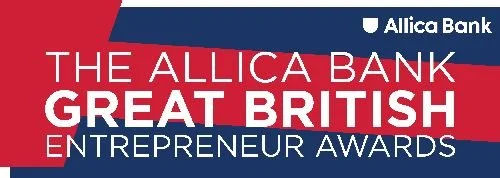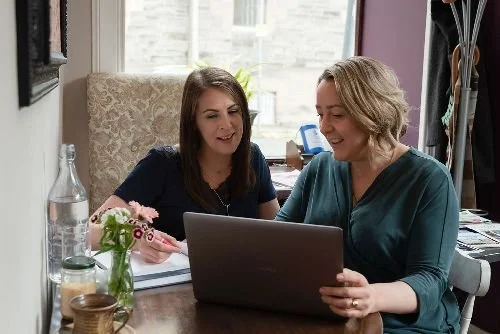The Power of Community for Organic Lead Generation in 2025: A Guide
Being part of communities has transformed my business in ways I never anticipated. Beyond simply lead generation, communities have connected me with business besties, accountability partners, and yes, some of my most aligned and long-term clients. Every community I've joined, from small mastermind groups to larger industry networks, has brought something valuable to my business journey. The relationships formed in these spaces have been catalysts for growth, collaboration and opportunity.
I've discovered that building and nurturing communities creates something magical - a space where potential clients come to know, like, and trust you before they've even had a one-to-one conversation. They experience your expertise firsthand, connect with your values, and often pre-qualify themselves before reaching out.
The most powerful realisation for me has been that communities generate leads while you're genuinely serving and connecting with people. There's no need for pushy sales tactics or manipulation, simply authentic relationship-building that naturally leads to business opportunities.
Throughout this guide, I'll show you exactly how to implement the community-based lead generation strategies that are working best in 2025. These aren't theoretical concepts, they're proven approaches that I’m using to grow my business and help my clients become fully booked - and beyond.
What Is Community-Based Lead Generation?
Community-based lead generation is the strategic process of building or joining groups of like-minded individuals to establish trust and credibility, ultimately converting community members into qualified leads. Unlike traditional marketing which often focuses on one-to-many broadcasting, the community approach creates multi-directional relationships, between you and members, and between the members themselves. This web of connections creates a powerful ecosystem that becomes your most reliable source of high-quality leads. That expression ‘people who mention your name in rooms of opportunity’ - a community-first approach is how to make that happen.
What makes this approach so effective is that it flips the traditional marketing model. Instead of constantly pushing your message outward, you're creating spaces where interested prospects willingly gather, engage, and build relationships over time.
Why Community-Based Lead Generation Works Better Than Traditional Methods
Community-based lead generation offers several distinct advantages over traditional lead generation approaches:
Higher-Quality Leads: Community members who become leads are typically more informed about your offerings and better aligned with your approach, leading to smoother sales conversations and higher conversion rates.
Extended Relationship Building: Unlike one-off lead generation tactics, communities allow for relationships to develop continuously over weeks, months, or even years.
Trust Acceleration: Communities fast-track the "know, like, trust" process through repeated interactions and opportunities for you to demonstrate your expertise.
Reduced Marketing Costs: While communities do require a time investment, they typically cost significantly less than paid advertising or large-scale content marketing.
Self-Qualifying Prospects: Community members in search of deeper engagement often self-identify as potential clients, making your lead qualification process far more efficient.
Types of Communities for Lead Generation
There are three primary community types you can leverage for lead generation, each with its own advantages and challenges:
1. Owned Communities
These are communities you create and manage yourself. You set the tone, establish the guidelines, and take responsibility for community growth and engagement. Owned communities include regular workshops (like my Marketing Mondays sessions), private Facebook or LinkedIn Groups, Discord or WhatsApp channels, Instagram Close Friends groups, membership platforms and in-person networking events where you are the host.
The primary benefit of owned communities is complete control over the environment, direct access to your audience and immediate perceived authority. However, they require significant time and effort to build and maintain. The investment is worth it though - these communities often become the most valuable assets in your business.
I hosted in-person networking events every month for three years pre-Covid. I still have clients and friends today, who I first met at those events.
2. Earned Communities
These are existing communities where you join as a contributing member or featured expert. You don't own or manage these spaces, but you establish yourself as a valuable resource within them. Examples include industry Facebook and LinkedIn Groups, professional associations, networking organisations, online forums and other people's membership communities.
The advantage of participating in these communities is immediate access to established audiences. You can start generating leads much faster than building from scratch. The challenge is standing out authentically without being overly promotional. I've found that consistently showing up with genuine value is the key to becoming a recognised expert within these spaces.
3. Hybrid Community Models
These combine elements of both owned and earned approaches. Think co-created communities with complementary business owners, joint ventures for specific initiatives, collaborative events and challenges, sponsored sub-groups or complimentary events within larger communities.
Hybrid models give you the best of both worlds - you can leverage others' expertise and audiences while still maintaining significant input on community direction. These partnerships often create win-win situations where both parties benefit from combined resources and reach.
I’ve had clients come from speaking gigs, where I’ve been invited to speak on the stage at events hosted by those running the memberships I’m part of. It’s not something I have time for currently, but some of the memberships I’m part of also offer the opportunity to be an ambassador, or a local event host. Look out for these opportuntiies and decide which will be the most valuable for you.
Building Your Own Community
Creating your own community from scratch might seem daunting, but it's often the most rewarding approach for sustainable lead generation. Here's my step-by-step process:
Step 1: Define Your Community Purpose
Every successful community needs a clear and compelling reason to exist. Ask yourself:
What specific challenges will this community help members overcome?
What transformation or results will members experience?
How does this community differ from others already available?
What unique value can I provide as the community leader?
The most effective communities focus on implementation rather than just information. My Marketing Mondays sessions are built around this principle - we don't just talk about marketing, we actually solve problems and do it together in real-time.
Step 2: Choose the Right Format and Platform
Your chosen community format should align with your strengths, your audience's preferences, and your overall business model. Consider these popular formats:
Interactive workshops: Regular implementation sessions (weekly, monthly)
Online groups: Facebook, LinkedIn, Circle
In-person meetups: Local gatherings, networking events
Hybrid events: Combining virtual and in-person elements
Whatever format you choose, ensure it allows for genuine interaction and relationship building. Make sure that you have a list of interaction ideas before you start to build the group. One-way broadcasting rarely builds true community.
Step 3: Create Community Guidelines and Culture
Successful communities have clear expectations that foster positive interaction. Key things to establish are:
Core values that guide all of your community activities
Participation guidelines that encourage meaningful engagement (and set boundaries)
Content frameworks that members can rely on
Moderation approach to handle any challenges
Your guidelines should be firm enough to maintain quality but flexible enough to allow organic growth and evolution. I get quite strict these days, participation is a must within my communities, becuase I want them to be beneficial for all.
Step 4: Develop Consistent Community Rituals
Rituals create the heartbeat of your community and keep members coming back. Effective community rituals include:
Regular welcome sessions for new members
Themed discussion days or challenges
Celebrations of member wins and milestones
Expert sessions or special guests
Implementation sprints or focused co-work sessions
For Marketing Mondays, I've created a consistent structure with my Marketing Implementation Worksheet, a ‘join anytime’ approach, a rule that muting yourself and quietly implementing is definitely allowed and an open Q&A that members know they can count on every week.
Step 5: Strategic Lead Generation Touchpoints
While the community itself builds relationships, you need intentional touchpoints that convert members to clients. These might include:
Value-added offers exclusive to community members
Natural mentions of your services when relevant to discussions
Member success spotlights that showcase transformation
Periodic direct invitations to work with you at a deeper level
Community challenges that lead toward your paid offerings
The key is balance - too promotional and you'll damage community trust; too passive and you'll miss conversion opportunities.
Effective Strategies for Participation in External Communities
When you don't have the time or resources to build your own community, or ideally in addition to this, strategic participation in existing communities can be incredibly effective. Here's how to do it right:
1. Identify the Right Communities for Your Business
Look for communities that are made up of large numbers of your ideal clients, have active and engaged discussions, allow meaningful contribution, align with your values, and are well-moderated. Quality over quantity - it's better to be highly engaged in 2-3 valuable communities than superficially present in dozens. My lis of favourite communities is always evolving. Right now, the memberships I’m part of include Digital Women, Female Founders Rise and The Wilder Collective, while I’m also part of the Great British Entrepreneur Awards community (having been shortlisted three times - still going for the win!) and I’ve been to every ATOMICON since it started.
2. Establish Your Expert Presence Through Value
Focus on establishing yourself as a helpful expert, not just a self-promoter. Answer questions thoroughly with actionable advice, share insights from your experience, and create value-driven posts that solve common problems.
A client mentioned recently that she planned to share some knowledge, but withhold some for her clients. But my advice was the opposite, share generously and openly at every opportunity. Deliver so much actionable content that people think "if they're giving this away for free, imagine what their paid offerings must be like!"
3. Build Strategic Relationships with Community Leaders
Community lead generation isn't just about connecting with potential clients - it's also about building relationships with community leaders, complementary service providers and potential referral partners. These relationships often lead to guest expert opportunities or collaborative projects that put you in front of the entire community.
If you’re wondering how to do this, my advice is to remember they’re people too, so don’t let a lack of confidence hold you back from introducing yourself and when you show up with energy and excitement, people respond well to that. In other words, you won’t see me playing it cool!
4. Strategic Visibility Techniques That Convert
To stand out without being pushy, focus on being consistently helpful, aim to become the go-to expert in the space for your particular niche by delivering content and opportunities that showcases your unique perspective. Remember that visibility without value is just noise - your goal is to become the person who’s top of mind for your ideal client’s specific challenges.
Content Strategy for Community Lead Generation Success
The content you share within communities can make or break your lead generation success. Here are my tips for developing content that builds authority and generates qualified leads:
1. Problem-Solving Content That Drives Engagement
Create step-by-step tutorials for common pain points, templates that simplify complex processes, and implementation checklists that ensure success. Your goal is to create content so helpful that members bookmark it and associate you with solutions to their most pressing problems.
2. Conversation-Starting Content That Builds Relationships
Generate meaningful discussion with thoughtful questions that prompt reflection, share industry trends with your unique perspective and polls that encourage participation. This content builds relationships while giving you valuable insights into your audience's thinking.
3. Trust-Building Content That Positions Your Expertise
Build credibility by sharing behind-the-scenes glimpses of your process, transparent case studies (with permission) and thought leadership on emerging topics. This helps community members see you as a trustworthy expert who truly understands their world.
4. Conversion-Focused Content That Generates Qualified Leads
Bridge the gap between community participation and becoming a client with self-assessment tools, comparison frameworks for different solutions, and decision guides for choosing the right approach. These help members self-identify as ready for more support while positioning your offerings as the logical next step. If this sounds complicated, start with a very basic quiz, even the answers to a few key questions can deliver incredible insights.
Converting Community Members into Qualified Leads
Before you begin the hard work of building a community you must have a conversion strategy ready to go. Here's how to ethically turn engaged community members into qualified leads:
1. The Value Ladder Approach to Community Conversions
Create a clear pathway from free community participation to paid offerings. Start with free community engagement to build awareness and trust, then offer lead magnets to deepen the relationship, followed by entry-point offers, core offerings, and finally advanced solutions. This approach will work throughout your business, not just in your own community so it’s a great use of your time to develop this approach for your overall business and all of your products as well.
By presenting this as a journey rather than disconnected offerings, you help community members see and understand the natural progression of working with you.
2. Strategic Call-To-Action Techniques That Feel Natural
How you invite community members to take the next step matters a lot. Use CTAs that respond to specific pain points. These should be value-driven invitations that emphasise transformation, and if possible offer exclusive community opportunities that are unavailable elsewhere.
It’s as essential within your communities as it is elsewhere in your business that your call-to-action feels like helpful guidance rather than pushy selling. I’m sure you’ve come across people who seem to just sell, sell, sell without even bothering to get to know you first. It’s such a huge turn-off.
3. Community-Specific Lead Magnets That Convert
Create lead capture resources specifically designed for community needs, such as enhanced versions of popular community content or implementation tools for frequently discussed challenges. These convert effectively because they're directly relevant to conversations members are already engaged in - and they demonstrate that you’re listening and responding to people’s needs.
4. Nurturing Sequences Designed for Community Members
Develop community-specific welcome sequences and content that references shared community experiences. This approach maintains the relationship context rather than treating them like cold subscribers, creating a more seamless transition from community member to client.
How to track your successes!
Track community engagement
It is essential that you keep an eye on how your community is functioning as you build it up and also how successful it is at generating leads so you can fine-tune it as you go.
I would definitely recommend tracking your communities engagement and participation rate. Measure content engagement through comments and shares, and watch retention rates to see how long members stay active. You should also monitor discussion quality and how it measures up against your community guidelines. Don’t be afraid to take action if members aren’t sticking to the rules.
If you are creating lead magnets specifically for your community, or testing them out there first, pay close attention to conversation. You can comprare these metrics against those of your wider business to help quantify the wider impact of your community efforts.
Also track the questions being asked, relationship development between community members, unsolicited testimonials and word-of-mouth referrals. These qualitative indicators often predict future quantitative success.
If you are really into your analytics and want to get granular, you can also track sales conversion rates compared to other channels and customer lifetime value from community-sourced clients. (I highly recommend this, so satisfying when you are able to track exactly what’s working).
Common Mistakes to Avoid in Community-Based Lead Generation
After helping many businesses implement community-based lead generation and joining lots (and lots) of communities for my own business, I've observed these common pitfalls:
1. Creating a Community Without Clear Purpose or Value
Many communities fail because they lack a compelling reason to exist. Make sure your community has a specific focus that differentiates it from others and has clear outcomes members can expect to achieve. Without these elements, even the most enthusiastic community launch will fizzle quickly.
2. Over-Promoting Too Early in the Community Lifecycle
Nothing kills a community faster than premature selling. Avoid promoting your services before establishing genuine value. The rule of thumb: Deliver 10x more value than promotional content.
3. Inconsistent Engagement and Community Presence
Communities require consistent leadership and presence. Show up regularly, not just when you have something to promote. When members know they can count on you, they're much more likely to engage consistently themselves.
And make sure you keep it fun for yourself! Nothing will put you off growing a community more (and stop that community from growing too), than your own lack of energy for the task.
4. Neglecting Community Culture and Guidelines
The most successful communities have intentional cultures with clear guidelines and consistent moderation. Creating a positive, supportive environment makes people want to stay, engage, and eventually work with you at a deeper level.
Implementation Plan: Your First 90 Days of Community-Based Lead Generation
And now onto the action. Are you ready to implement community-based lead generation? Here's your 90-day roadmap:
Days 1-30: Foundation Building Phase
Define your community purpose and select your platform and format. Create community guidelines and an initial content plan. Develop your first lead magnet specifically for community members and invite an initial core group to help establish culture.
Focus on quality interaction over rapid growth during this phase. It's far better to have 20 engaged founding members than 200 lurkers who never participate.
Days 31-60: Engagement Optimisation Phase
Establish regular content themes and community rituals. Refine your approach based on early interactions. Implement a tracking system for generated leads.
This phase focuses on creating sustainable engagement patterns that will serve your community long-term. You are looking for regular content ideas that you can do time and again that offer lots of value to community members.
Days 61-90: Strategic Growth and Conversion Phase
Launch a targeted growth initiative to attract more ideal members. Implement your first community-to-client conversion campaign with confidence. Develop systems to scale your community management and create advanced lead magnets for your community based on observed needs.
By day 90, you should have a functioning community offering real value to it’s members, along with a vibrant and enthusiastic membership interacting with both you as the host and each other. If you can provide all of the above you will consistently bring qualified prospects into your business so it’s a win, win all round.
Conclusion: Taking Action on Community-Based Lead Generation in 2025
Community-based lead generation represents one of the most sustainable, ethical, and effective ways to attract qualified leads in today's marketing landscape. Community building creates lasting business connections that appreciate over time.
The strategies I've shared work because they're built on a fundamental truth: people today prefer to buy from those they know, like, and trust. Communities accelerate this process by allowing potential clients to experience your expertise, approach, and values before making a purchasing decision.
Now you just need to decide what route you will take to building community. Will you start your own community or strategically participate in existing ones? Either way consistent action is what transforms these clear concepts into real business results
I hosted the first Marketing Mondays on Monday 2nd September and within three months, had filled a cohort of my signature programme Fully Booked Bootcamp, largely with people who had already joined Marketing Mondays.
I’ve also just filled my current 1-2-1 offer, with people from within my community who have all signed up within a fortnight of me announcing the offer. The majority of these people were not in my community six months ago.
My tip to you, therefore, is make the decision today and just go for it. I guarantee that you will be amazed with the results you can generate within a relatively short space of time.
Like the sound of personalised guidance to implement these strategies? Join me for Marketing Mondays at nikihutchison.com/mondays and discover what it’s all about! You’ll be invited to my weekly sessions, get access to my Marketing Implementation Sheet and my private Enjoy Marketing Facebook community.
See you there?









